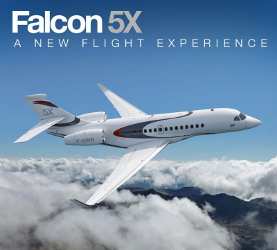Airbus Reveals the Future of Flight in Smarter Skies
Leading aircraft maker Airbus has revealed its vision of something called “Concept Planes” that will flock along ‘express skyways’ to cut time and emissions.
Intelligent planes that are propelled into the air, flock in formation and fly ‘express skyways’ could cut time, delays, stress and emissions, according to Airbus experts.
Those behind the wheel during rush hour aren’t the only ones stuck in traffic. Airbus says air passengers already spend more than 500 million hours in the air unnecessarily every year.
[ Also Read: Will the Use of Social Media Affect Air Travel? ]Reasons include inefficient aircraft operations and routes that are anything but ‘direct’. That equates to nine million tonnes of avoidable excess fuel and more than 28 million tonnes of CO2. The numbers are set to rise with passenger growth expected to grow, says Airbus.
Airbus, which says the technology already exists to fly shorter and more precise routes, today unveils five revolutionary concepts to get passengers from A to B quicker, whilst helping the industry meet its target to halve CO2 emissions by 2050.
[ Also Read: 10 Things I Want Technology to Do for Me ]It’s the latest installment in the Future by Airbus – a vision of sustainable aviation in 2050 already responsible for the radical Concept Plane and Cabin. Now Airbus is looking beyond aircraft design to how the aircraft is operated both on the ground and in the air.
Its ‘Smarter Skies’ concepts are:
1. Aircraft launched into continuous ‘eco-climb’ – Assisted take-off using renewably powered, propelled acceleration, would see aircraft climb rapidly to their most efficient cruising altitude, reducing emissions and noise. As mega-cities become a reality and space becomes a premium, runways could be shortened to minimise land use.
2. Aircraft in ‘free flight’ and formation along ‘express skyways’ – Intelligent aircraft would be able to self-organise and select the most efficient routes (‘free flight’), making the optimum use of prevailing weather and atmospheric conditions. Planes could rendezvous in mid-air and flock like birds in formation to reduce drag and thus fuel consumption and emissions
3. ‘Low-noise’ glided approaches and landings – In descent, aircraft could glide smoothly into airports with engines running in idle, significantly reducing emissions and noise. Slower landing speeds would make shorter runways a viable possibility at both ends of the journey
4. Low emission ground operations – Landing positions could be optimised with enough accuracy for autonomous, renewably powered taxiing carriages to be ready, clearing runways quicker and optimising terminal space to remove runway and gate limitations. Engines could be switched off sooner, further reducing on-the-ground handling emissions
5. Powering future aircraft and infrastructure – The use of sustainable biofuels and other potential alternative energy sources such as electricity, hydrogen and solar, will secure supply and further reduce aviation’s environmental footprint. This will allow the extensive introduction of regionally sourced renewable energy close to airports, feeding both aircraft and infrastructure requirements.
Photo courtesy: Airbus




